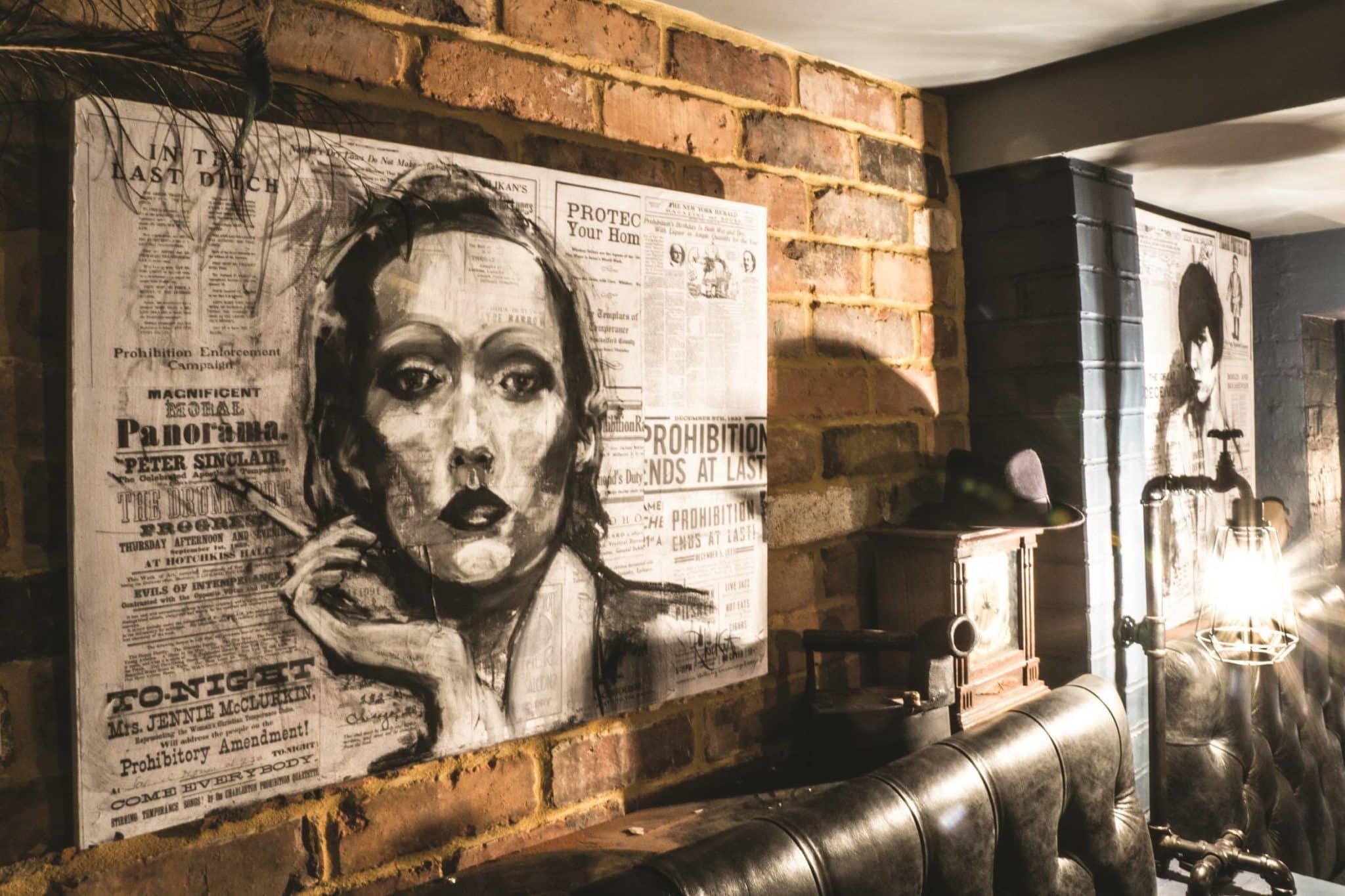Following Eileen Leahy’s interview with Ross Lockhart last November she talks to the painter again about his specially commissioned art show Prohibition, which is currently showing at the new private members’ bar Vale Vault in Tunbridge Wells
So Ross, tell us a little bit about your show Prohibition and why you were drawn to the Vale Vault as the perfect backdrop to showcase your most recent work?
When I first visited the Vale Vault I was inspired by the venue’s distinct ambience. Cocktail bars in Tunbridge Wells are a dime a dozen but this felt different. I loved that it was focused on recreating a classic, clandestine ‘speakeasy’ style bar of the 1920s. To enter into it you have to creep down a dimly lit alleyway and knock on a set of metal fire doors. It instantly reminded me of those illicit American bars people would steal away to in the middle of the night just to enjoy a Negroni or two. All of that inspired me to create my latest body of work, Prohibition, which I am currently exhibiting there.
What did you want to achieve with the paintings you produced as a result of being inspired by this special place?
I wanted to create work that helps transport the viewers back to that unique era and give them an insight into the social, political and economic climate of the 1920s and 30s. Quite simply, prohibition changed the 20th Century. But it wasn’t just the banning of alcohol that did it. With an economic boom surging through the United States at the same time there was also huge social upheaval and immigration soared. Chicago experienced terrible race riots as result of its residents protesting against the huge influx of black immigrants settling in the city. Women, who were never permitted to drink in public prior to the Prohibition Act, were now liberated. But as everyone was banned they could now drink as equals.
Would you say this explains why your exhibition features mainly  female portraits then?
Yes, the glitz and glamour of the femme fatales on the silver screen of that particular time, and the fashions coming in from Europe and Great Britain which spawned various looks including the Flapper girl, were hugely inspiring for me. They were stylish and rebellious young women, free to indulge in taboos and push social restraints well beyond their breaking points. Then of course there were other elements that interested me including crime becoming organised, the influx of European poets and writers to New York and jazz being at its zenith.
How difficult was it for you to encapsulate all of those elements into your series of Prohibition paintings?
Very but what I wanted was to represent the actual mood more than anything. The works themselves are of silent film actresses, rendered in charcoal and gouache and superimposed upon replica propaganda posters of the time. The titles of each painting come from the numerous poems written in New York during the Harlem Renaissance of the 1920s. Essentially each piece is layers of lies and glamour worked up to create something beautiful that’s worth more than the sum of its parts.
And how do you feel that this period in early 20th Century history can resonate with people viewing the exhibition in 2017?
While I was thinking about the whole prohibition era I began to realise that we as Britons are experiencing something quite similar: Immigration is at record levels and the ramifications of Brexit could threaten an economic crisis. However, there is light at the end of the tunnel. For all the hardships and turmoil people went through in the 1920s and 30s we now look back at it as a ‘Golden Age’ of modern culture. But will future generations look back in a hundred years and say the same about us now?
- Ross Lockhart’s Prohibition exhibition is on at the Vale Vault on Goods Station Road, Tunbridge Wells until the end of January. For more information on Ross and his work visit:Â http://rpaustinloc.wixsite.com/austinlockhart








